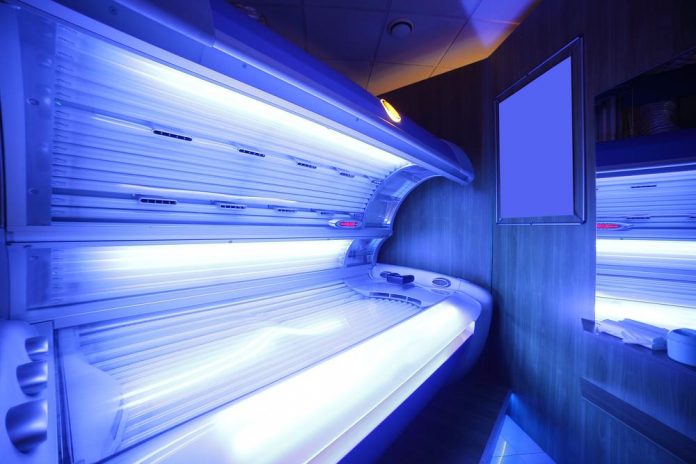Study results publically released to EurekAlert, show a correlation may exist between indoor tanning use and unhealthy weight control behaviors in adolescents, with a stronger association observed among males. In addition to being a major risk factor for melanoma, this new study suggests that indoor tanning might identify a group of teens at increased risk for eating disorders.
Published in the April Journal of Developmental & Behavioral Pediatrics, the study analyzed survey data on nearly 27,000 high school students 2009-2011, of which 23 percent of females and 6.5 percent of males reported indoor tanning within the past year. Indoor tanning was reported higher for older teens, with 33 percent of females and 11 percent of males aged 18 and over reported to indoor tan. (“Indoor tanning” excluded spray-on tans.)
The results showed that of the females who indoor tanned, the odds were 1.3 to 2.4 times greater that they also recently engaged in unhealthy weight control behaviors compared to those females who did not indoor tan, while indoor tanning males had a 2.3 to 7.1 times greater chance of engaging in unhealthy weight control behaviors than the male non-tanners. The behaviors included: fasting, vomiting, or taking a pill, powder, liquid or laxative to lose weight within the past 30 days.
The researchers theorize that concerns over a negative body image are a more likely cause for indoor tanning use, and so adolescents who indoor tan may be more susceptible to the disordered or unhealthy weight control behaviors linked to subsequent eating disorders. Because melanoma is among the common cancers in young adulthood, screening adolescents for indoor tanning use may now serve a dual purpose by identifying patients at risk for unhealthy weight control behaviors as well.
Understanding and addressing why these behaviors may be linked is essential to improved policies and patient counseling strategies to help curb the both the rising melanoma epidemic and adolescent eating disorders.








